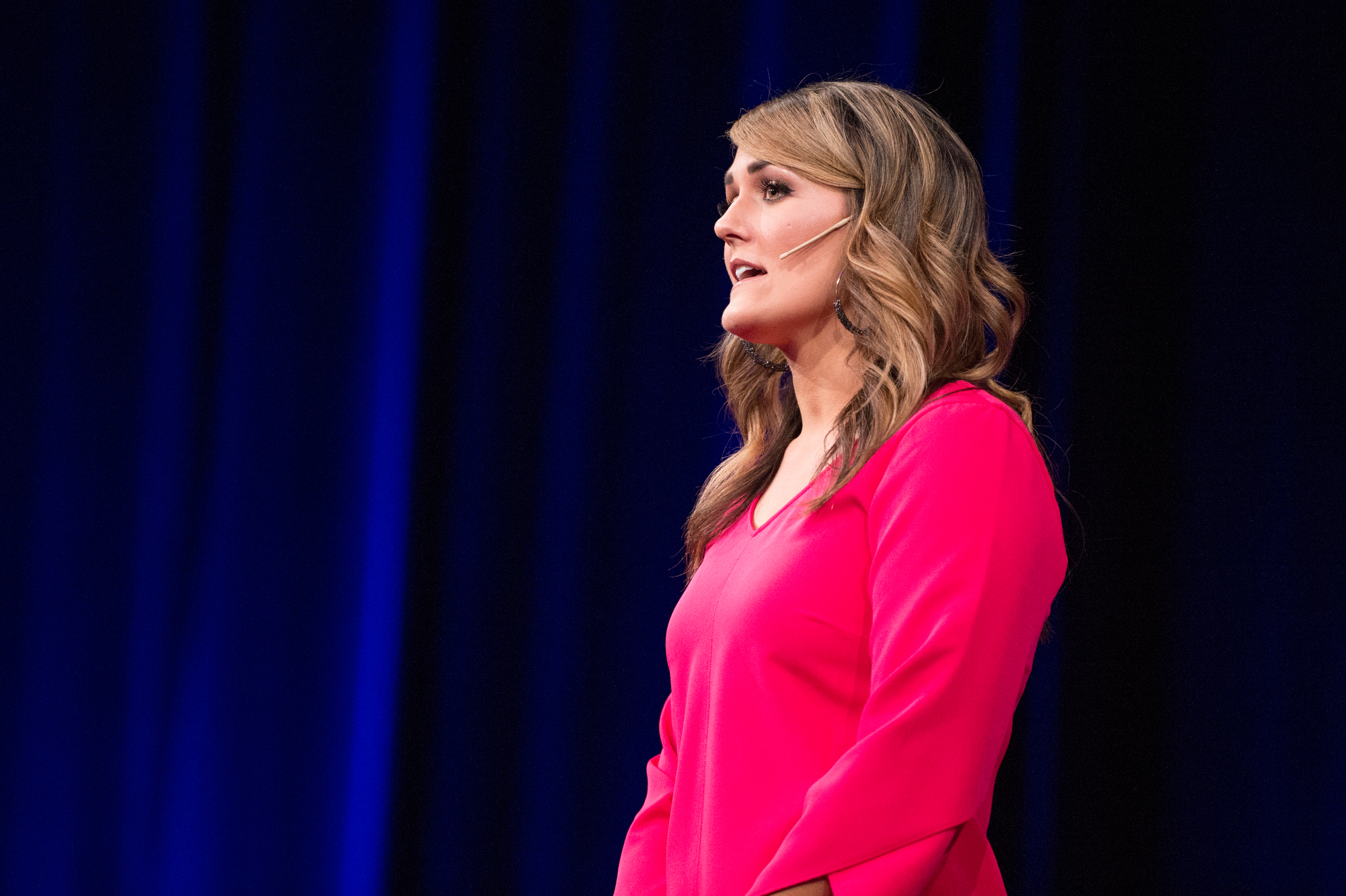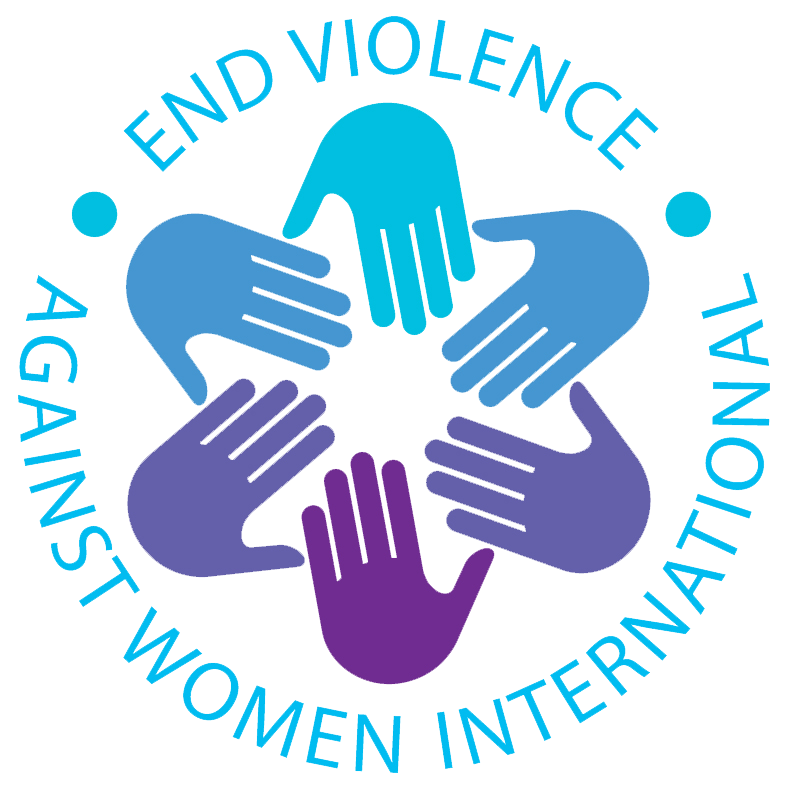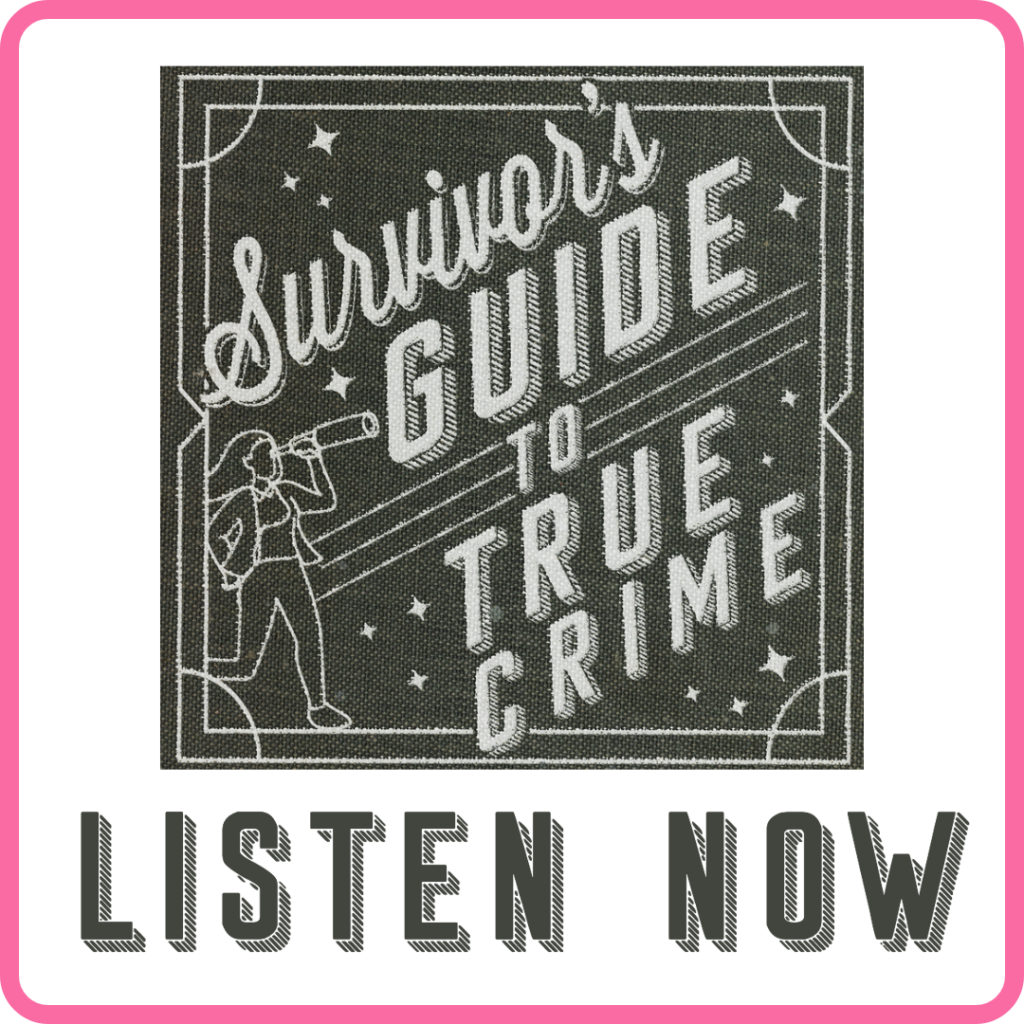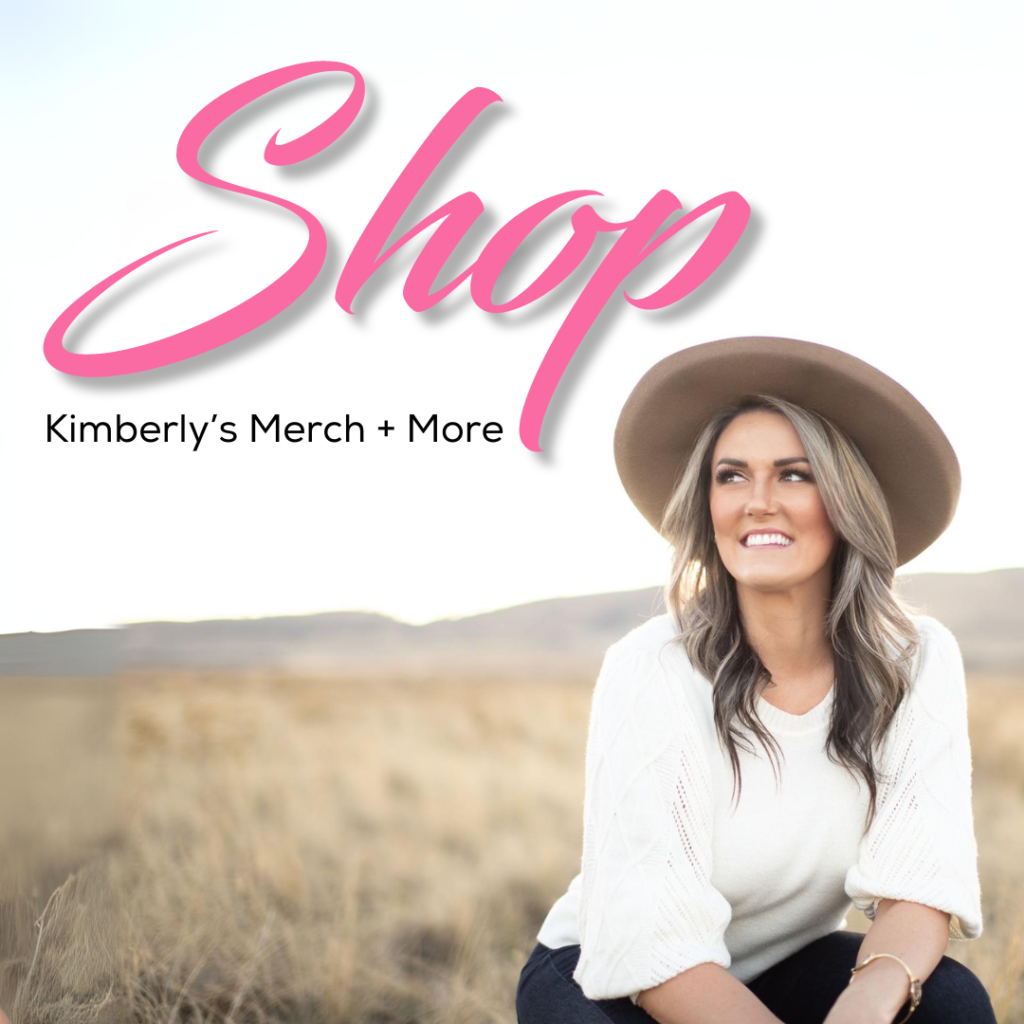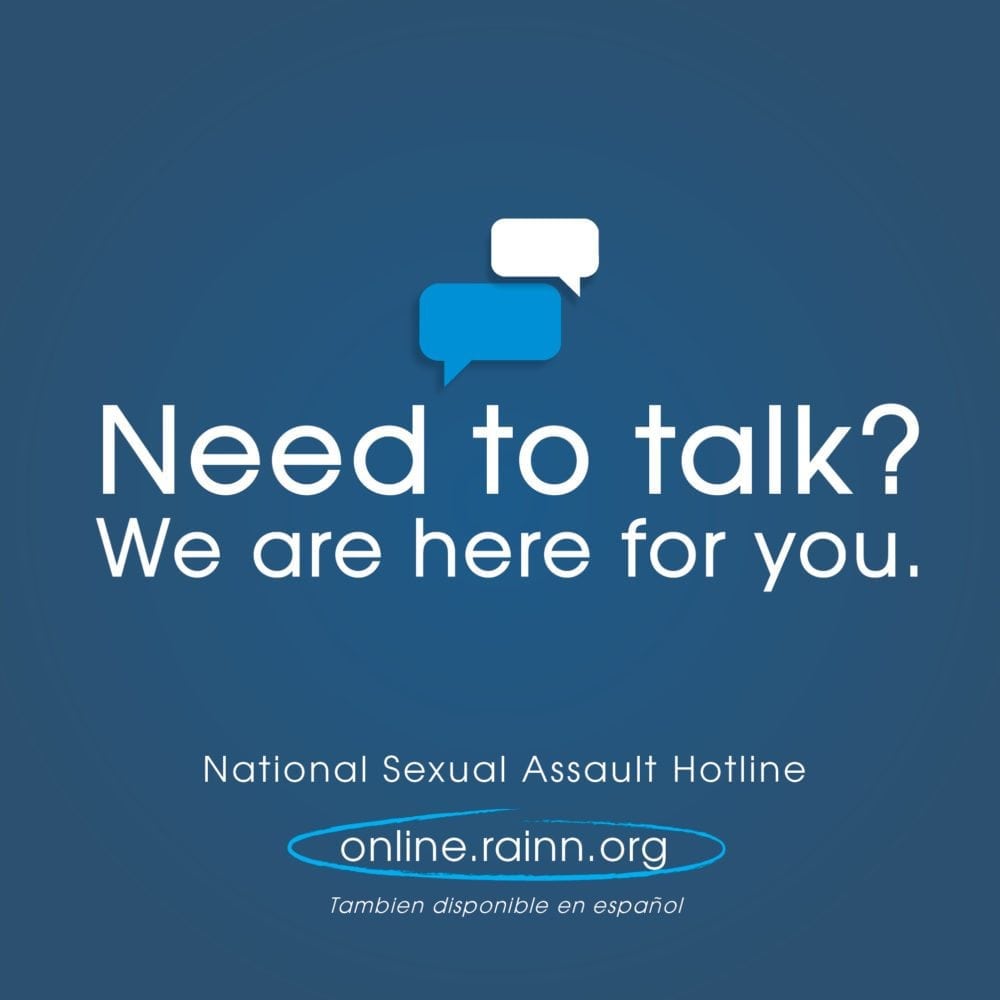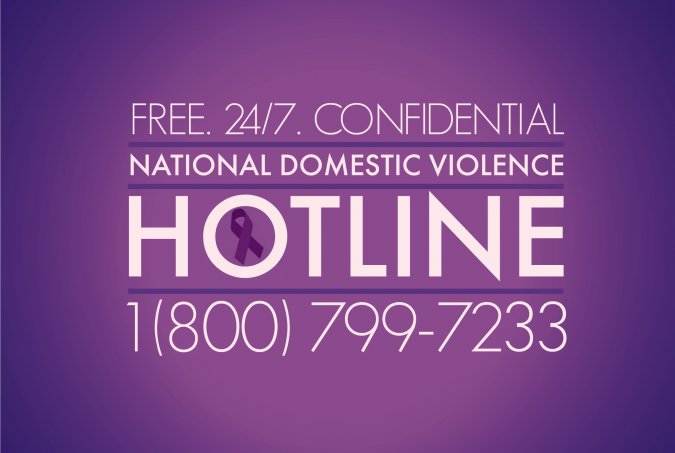I’d argue that the World Series of any public speaker is giving a TED talk—at least that’s how I always felt. These viral videos we’ve all come to know and love, given their sharable content and ability to make us feel enlightened, garner millions of views online. It was at the top of my bucket list for quite some time. I have been speaking publicly since 2007, using my own sexual assault, attacker’s trial, and mental health journey as a case study to help others. And though I’ve shared my message with FFL previously in many ways, now I have another story to share.
It just so happens that I had the distinct honor of delivering my very own TED Talk on December 1st from the red dot at TEDxMileHigh, and I’m thrilled to tell you all about my experience!
There is something special about TED talks but from the outside looking in, it’s difficult to define what makes them all so good. While TED hosts their own events, TEDx are independently organized community organizations all around the globe. Denver, Colorado is home to TEDxMileHigh, one of the most prominent TEDx events today. Luckily, it’s right here in my own backyard.
So without further ado, here are 10 secrets I learned from my experience with TEDxMileHigh:
No, you don’t have to be a professional speaker to be selected
TEDxMileHigh looks through thousands of applicants, hosts open auditions, and fields personal recommendations as they curate the right mixture of speakers for their bi-annual events. More than 6 months prior to ‘Reset’ (their December 2018 speaking event) the team was hard at work securing spots from all kinds of disciplines. Yes, there was excessive squealing and dancing when I got that official “Congratulations” email.

All about the big idea
This is what it all revolved around; our “big idea”. Basically, if you had one thing you wanted to share that could potentially change the world, what would it be? In reference to this issue we would address, “what is the status quo”, “what is the problem with the status quo”, and “what is our “big idea” to change that?”

Community was huge
Preparing for this event was more than just scripting and speaking, it was building a community with fellow speakers. We came from all over the globe with the same purpose—we wanted to share our hearts and minds with the rest of the world in a way they’d be willing to receive. I’d have never have crossed paths with some of my fellow speakers if not for this gathering, but I am immensely grateful to have them in my life now. We may not have shared all the same beliefs or politics, but I found I was elated with the diversity of thought. Our respectful exchanges made each other’s positions more inclusive. We could disagree and learn from each other at the same time, as it should be.

We receive coaching
Each speaker was assigned a coach to help them with scripting and delivery. Even after more than a decade, this was my first experience with any kind of media or speaking coach. My very professional previous methods included watching myself, saying “well that was awful”, and then changing it for the next time. My coach Briar was a huge help to honing in on my content. Taking a wide breadth of knowledge and pairing it down to a short, once-in-a-lifetime script took some serious work. She’s a total rockstar.

There are three components to each great talk
They are the head, heart, and core of a message. When we got together for the first time as a group, we were asked to tell each other about all three areas.
- Head: The statistics or factual data about our big idea–all facts, no feelings.
- Heart: The emotion (the story-telling component) behind your big idea. How you and others feel about your topic. The heart of what you want to convey can be a series of stories all strung together. Your big idea gains traction with an audience when it is communicated in a way that allows them to feel as though they are alongside you.
- Core: This is what you know in every fiber of your being to be important and true. It is that blazing passion that you find impossible to keep inside. This is your identity, your purpose, and what you are driven to impart upon the next generation.
Now when you watch, you’ll likely recognize these. A good talk has all three ingredients, but the mixture is up to the speaker. That way even a listener who has no interest in a topic can connect with the message.
Yeah, there was a breakdown involved
Eventually, writer’s block got the best of me. I was tired, emotionally drained, and feeling like anything I said wouldn’t do justice to fellow survivors. That responsibility is a weight I’ve carried with me since I started using my voice on behalf of those who could not. The cognitive dissonance (inner-conflict) I felt having to adhere to the “us vs. them” mentality was nothing more than a false dichotomy–but it took time working with my coach, my husband, and my fellow speakers to see that. Once I shed the ridiculous notion that there were certain things I should not say or that were “off-limits”, I found my voice again. I knew it would ruffle feathers, but as the brilliant Anne Lamott once said, “You own everything that happened to you. Tell your stories. If people wanted you to write warmly about them, they should have behaved better.”

Practice makes perfect
I recorded my final script and listened to it in the car, at work, cleaning the house, running, you name it. It was awkward and embarrassing…until it wasn’t. Then I was practicing in front of my husband and via Skype with Briar. We speakers practiced in front of each other at multiple group rehearsals. Seriously, if my headphones were on during the month of November, I was listening to my speech, not jamming out to Disney songs as per usual.

It was memorized
Word-for-word. And here’s the reason—these talks are meant to be a conversation and interactive with an audience. That can only happen if you have your content down pat. Our curator kept saying it should be to the level of “Happy Birthday”, as in you could jump in and start singing from any point. While what I actually said on stage differed slightly from my script, it was easy to know exactly what I had prepared.

Yeah, it was nerve-wracking
But not for the reason you may think. Once dress rehearsals were complete the night before, I had a sense of calm wash over me. I’d prepared and practiced as much as I possibly could. Stepping out onto the red dot under the brightest lights that December afternoon was the moment I’d been waiting for all along. In that moment, I was exactly where I needed to be saying what needed to be said, regardless of the criticism it may receive. After 12 years of publicly speaking out about my rape, I was more terrified to share this part of my journey–the part that isn’t over; that could be seen as incendiary to either side of the political aisle. I knew it could ruffle feathers and even anger some, but that was worth the risk if the message helped just one person know that they are not alone in their healing. It was meant to be a call to action for anyone willing to listen–to support those with whom they may disagree–to begin healing this culture of name-calling, bullying, and victim blaming.

All about the views
Once the event was over and the after-party had concluded, the raw footage of all our talks was sent off to TED. After some light editing, they are released online via TEDX’s YouTube channel. As each video goes live, the views tell the TED team which talks should be shared to the coveted front page of their website. From there, talks can be promoted via podcasts, social media, and every other medium you can imagine. However, the magical threshold is 100k views—it separates the good from the great and is tough to achieve without organic shares, comments, and likes from people just like you. So please, share away and help spread the message!

Credit: TedXMileHigh
When all was said and done, I had written 90 pages, prepared for 10 months, delivered a 16-minute speech to 5,000 live audience members, and potentially millions more online. It was a massive undertaking and part of the reason my podcast, ‘Life As She Knows It’, that I co-host with my work-wife Kirsta Rinehart took its first season break. For season 2, we will be taking you behind the scenes even more in depth and hosting a few fellow TEDxMileHigh speakers on the show as guests! You won’t want to miss this!
In the end, every word I said was my own. I was provided the opportunity to speak about sexual assault advocacy in a way that can reach even those who have never taken an interest in this epidemic. We shouldn’t shame or put down those who haven’t been involved but instead offer to educate and give them a place to start. Even more importantly, my core message has and always will be one that revolves around survivors: You are not alone–You are worthy–You are brave–and your story matters.
So ladies, use your voices. They are far more powerful than you could ever imagine, and someday, your big ideas may just change this world.
<3
To watch Kimberly’s full TedxMileHigh Talk, click here.
https://futurefemaleleader.com/kimberly-corban-behind-scenes-look-takes-get-teds-red-dot/

